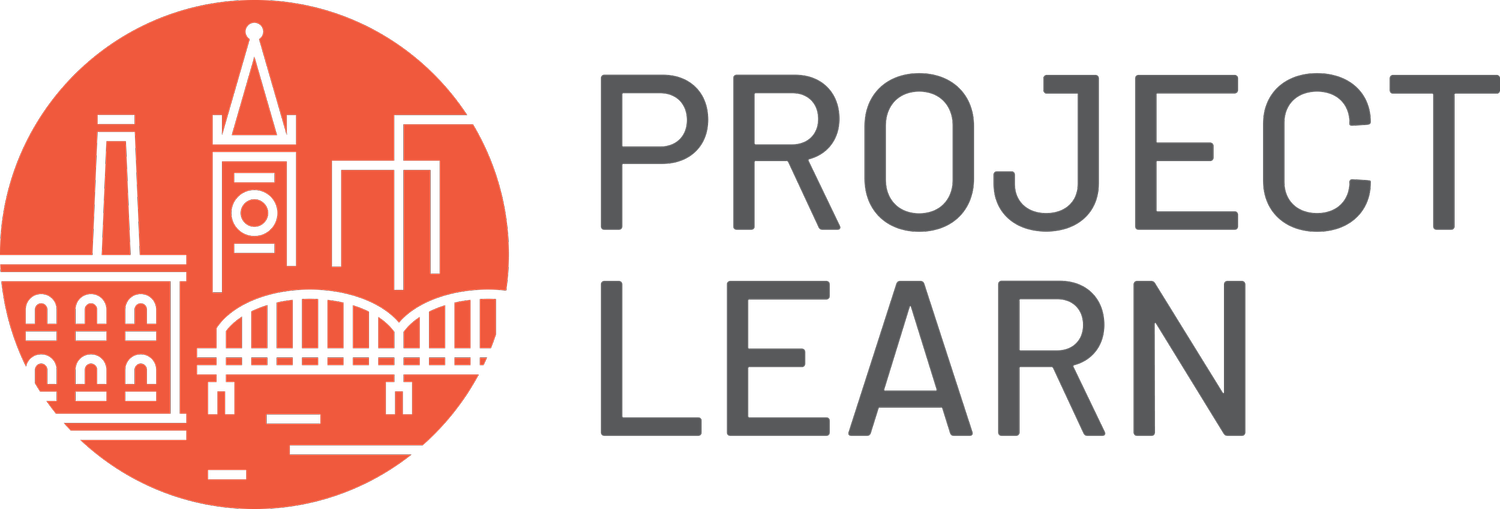LHS Interns Leave an Impact
By Jen Meyers
Originally Published in the LPS Notebook on August 7th, 2025
This summer, nine Lowell High School Education Pathway students could be found interning in the summer programs at the Shaughnessy, Morey, and Lincoln Elementary Schools, where they became invaluable assistants for teachers and super cool role models, collaborators, and buddies for the students.
In addition to their hands-on work in the schools, the students earned college credit by taking an accelerated 5-day version of the “Technology and Digital Literacy” course Cassie McCallum, a Literacy Specialist at the Shaughnessy Elementary School, teaches at the UMass Lowell School of Education.
On July 31, the interns wrapped up their summer adventure by presenting their final projects based on using technology in the classroom at an event hosted by Project LEARN, Inc. in their bright new headquarters on Central Street.
Geryanise Ortiz and Julianne Floro’s project: “Digital Equity and Cyberbullying: Creating Safer Online Spaces,” emphasized the importance of access to technology, the internet, and digital learning opportunities for every student, while also stressing the need to pair that with digital literacy, support, and protection.
“Cyberbullying is more popular these days than ever because there is the added layer of being able to be anonymous online,” said Floro, adding students and teachers need to know how to recognize cyberbullying and know how to report it.
Floro said the internship was a rewarding experience and there was an interesting dynamic between the interns and the students because it wasn’t THAT long ago they were sitting in those same elementary school seats.
“In the classroom, it was not only important for use to act like someone in charge, but also as people who could relate to and sympathize with the students,” she said.
Students Rinchen Ghising and Daisy Wariua presented about the use of Braille as an assistive technology for students who are blind or have vision impairments. They explained the history of Braille, the types of Braille, the pros and cons of using it in schools, and showed a video about a young blind girl whose life was changed for the better when she attended the Perkins School for the Blind and learned how to read and write Braille.
They then asked the audience to break into groups and using a key, decode a Braille message, which many found more difficult that they thought it would be.
Katelyn Sree and Ginnelys Torres’ presentation focused on Augmentative Alternative Communication (AAC) – methods of communicating without relying on spoken words.
They explored a wide range of options including sign language, eye gaze boards, alphabet pointing boards, talk devices, and the high-tech Tobii Dynavox speech-generating device.
They had a particularly difficult challenge for the audience – break into groups to participate in the Blind, Deaf, and Mute Challenge.
One person is blindfolded, one wears noise-canceling headphones, and the third cannot speak. They then have five minutes to put together as much of a 1,000-piece puzzle as they can.
However – only the blind person can touch the pieces, only the mute person has access to what the completed puzzle looks like, and only the deaf person can convey instructions to the blind person. Needless to say, it did not go spectacularly well.
The challenge highlighted the communication frustrations and pitfalls felt by people in each of those groups and the importance of identifying assistive technology that works best for each individual.
Tatiana Ficher and Avery Fells took a look at the use of progress monitoring software in classrooms, exploring the strengths and weaknesses of several different programs including iReady, Dibels, EasyCBM, IXL , and AIMSweb. These programs are used by teachers to track student growth over time.
Angela Bonsu compared communication alternatives for non-verbal students. Students may be non-verbal for a number of reasons including Autism, hearing impairments, cerebral palsy or a variety of other physical and neurological conditions. These students, Bonsu explained, are often unable to participate in in classroom activities and discussions; they may feel isolated, which can lead to them falling behind academically as well as developing emotional and behavioral issues.
Bonsu explored the use of sign language and printed communication cards to help students express themselves. She then led the audience in a paired exercise where there were a number of items placed on the table and the participants had to take turns guessing which item was being requested without speaking, pointing, or gesturing. They had to get pretty creative, but there was definitely a lot of frustration on their faces.
“Students learn so much from internships, from getting involved in actual experiential learning in companies and in a schools,” Superintendent of Schools Liam Skinner told the students, adding he would like to move to a year-round school year, with the summer used for these types of hands-on learning experiences.
Project Learn Board Member Steven Thurston Oliver, an education professor at Salem State University, told the students that going into the education field does not just limit you to being a classroom teacher.
“The field of education is vast,” he said, added they could work for a community-based organization, as a curator or educator in a museum, as a school counselor, in teacher development, or as a school administrator among other opportunities. “Education is an area where we get to use our life energy and our life work to be one part of making society better, more equal, more fair, and more just.”

